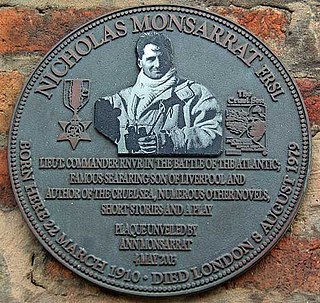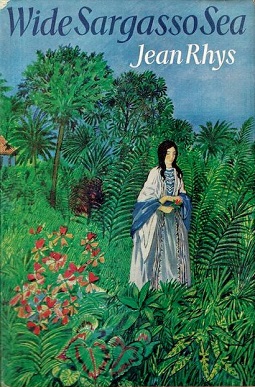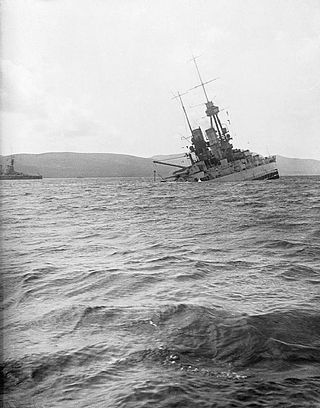This article needs additional citations for verification .(February 2024) |
In the Sargasso Sea is a novel written in 1898 by Thomas Allibone Janvier. [1] Recently, Kessinger Publishing's rare reprints has re-issued the book.
This article needs additional citations for verification .(February 2024) |
In the Sargasso Sea is a novel written in 1898 by Thomas Allibone Janvier. [1] Recently, Kessinger Publishing's rare reprints has re-issued the book.
The protagonist, Roger Stetworth, unwillingly joins a slave ship called the Golden Hind captained by Luke Chilton. (When Chilton demanded that Roger "sign aboard" he refused and was clubbed on the head and thrown overboard.) He is rescued by the Hurst Castle and doctored by a stereotypically depicted Irishman. The Hurst Castle is abandoned but does not founder in a gale, and the crew, unable to get to him, are forced to leave Stetworth marooned aboard. The ship drifts into the center of the Sargasso Sea where Stetworth finds himself in a ships' graveyard in which survivors of previous shipwrecks still inhabit the forgotten ships. Stetworth must rely on his own ingenuity to get free of the choking weeds that fill the sea.

The Sargasso Sea is a region of the Atlantic Ocean bounded by four currents forming an ocean gyre. Unlike all other regions called seas, it has no land boundaries. It is distinguished from other parts of the Atlantic Ocean by its characteristic brown Sargassum seaweed and often calm blue water.

Lieutenant Commander Nicholas John Turney Monsarrat FRSL RNVR was a British novelist known for his sea stories, particularly The Cruel Sea (1951) and Three Corvettes (1942–1945), but perhaps known best internationally for his novels, The Tribe That Lost Its Head and its sequel, Richer Than All His Tribe.

Wide Sargasso Sea is a 1966 novel by Dominican-British author Jean Rhys. The novel serves as a postcolonial and feminist prequel to Charlotte Brontë's novel Jane Eyre (1847), describing the background to Mr. Rochester's marriage from the point of view of his wife Antoinette Cosway, a Creole heiress. Antoinette Cosway is Rhys's version of Brontë's "madwoman in the attic". Antoinette's story is told from the time of her youth in Jamaica, to her unhappy marriage to an English gentleman, Mr. Rochester, who renames her Bertha, declares her mad, takes her to England, and isolates her from the rest of the world in his mansion. Wide Sargasso Sea explores the power of relationships between men and women and discusses the themes of race, Caribbean history, and assimilation as Antoinette is caught in a white, patriarchal society in which she fully belongs neither to Europe nor to Jamaica.

HMS Denbigh Castle (K696) was one of 44 Castle-class corvettes built for the Royal Navy during World War II. The ship was completed at the end of 1944 and was assigned to the 7th Escort Group at the beginning of 1945. While escorting her first and only Arctic convoy to Russia, she claimed to have shot down a German torpedo bomber. Denbigh Castle was torpedoed in early 1945 by the German submarine U-992, with the loss of 11 men, near the Soviet coast. The ship was beached in an effort to save her, but she was pulled off by the ebbing tide and capsized. Her wreck was declared a total loss.

Sargassum is a genus of brown macroalgae (seaweed) in the order Fucales of the Phaeophyceae class. Numerous species are distributed throughout the temperate and tropical oceans of the world, where they generally inhabit shallow water and coral reefs, and the genus is widely known for its planktonic (free-floating) species. Most species within the class Phaeophyceae are predominantly cold-water organisms that benefit from nutrients upwelling, but the genus Sargassum appears to be an exception. The species within Sargassum are normally benthic, but some of the species may take on a planktonic, often pelagic existence after being removed from reefs during rough weather. Two species have become holopelagic—reproducing vegetatively and never attaching to the seafloor during their lifecycles. The Atlantic Ocean's Sargasso Sea was named after the algae, as it hosts a large amount of Sargassum.

HMS Hurst Castle (K416) was one of 44 Castle-class corvettes built for the Royal Navy during World War II. Completed in June 1944, she began escorting convoys in August and was sunk by a German U-boat the following month.

James Chilton was a Leiden Separatist passenger on the historic 1620 voyage of the ship Mayflower and was the oldest person on board. Upon arrival in the New World, he was a signer of the Mayflower Compact. James Chilton was one of the earliest to die that winter, perishing within the following month.

Lieutenant Henry Tingle Wilde, RNR was a British Merchant Navy officer who was the chief officer of the RMS Titanic. He died when the ship sank on her maiden voyage in April 1912.
Sargasso Sea Stories are a group of short stories written by English author William Hope Hodgson that are set around the Sargasso Sea. They have been featured in various short story collections, including The Boats of the "Glen Carrig" and Other Nautical Adventures: The Collected Fiction of William Hope Hodgson, Volume 1. In his introduction to this volume, the editor Jeremy Lassen writes:
[These stories] are the kind of stories that helped Hodgson achieve commercial success. These stories were often published in the highest paying fiction markets of his day, and demonstrate his wide-ranging narrative talent... Today's readers of Hodgson may be more familiar with his stunningly original novels of cosmic vision, such as The House on the Borderland or The Night Land, but it is his narratives of the sea that first captured the attention of the reading public. Most importantly, however, it was in the weed-choked Sargasso Sea where Hodgson first began to explore unreality, and the borderlands of human existence.
John Conroy Hutcheson (1840–1897) was a British author of novels and short stories about life aboard ships at sea.

USS Hurst (DE-250) was an Edsall-class destroyer escort in service with the United States Navy from 1943 to 1946. The ship served in both the Atlantic and the Pacific and was decommissioned in May 1946 and placed in reserve for the next 27 years.

The ship's cat has been a common feature on many trading, exploration, and naval ships dating to ancient times. Cats have been brought on ships for many reasons, most importantly to control rodents. Vermin aboard a ship can cause damage to ropes, woodwork, and more recently, electrical wiring. In addition, rodents threaten ships' stores, devour crews' foodstuff, and can cause economic damage to ships' cargo, such as grain. Vermin are also a source of disease, which is dangerous for ships that are at sea for long periods of time. Rat fleas are carriers of plague, and rats on ships were believed to be a primary vector of the Black Death.

On 21 June 1919, shortly after the end of the First World War, the Imperial German Navy's High Seas Fleet was scuttled by its sailors while held off the harbour of the British Royal Navy base at Scapa Flow, in the Orkney Islands of Scotland. The fleet was interned there under the terms of the Armistice of 11 November 1918 while negotiations took place over its fate. Fearing that either the British would seize the ships unilaterally or the German government at the time might reject the Treaty of Versailles and resume the war effort, Admiral Ludwig von Reuter decided to scuttle the fleet.

The Lost Continent is a 1968 adventure film made by Hammer Films and Seven Arts featuring Eric Porter, Hildegard Knef, Suzanna Leigh, Tony Beckley, and James Cossins. The film was produced, directed and written by Michael Carreras based on Dennis Wheatley's novel Uncharted Seas (1938).
Wenman Humfrey "Kit" Wykeham-Musgrave (1899–1989) was a Royal Navy officer who has the possibly unique distinction of having survived being torpedoed on three different ships on the same day.

(For the 1929 talkie see The Isle of Lost Ships )

The Overseas Patrol Squadron is a front-line squadron of the Royal Navy with responsibility for patrolling the UK's Extended Fisheries Zone, both at home and around British Overseas Territories. The squadron, with headquarters at HMNB Portsmouth, is equipped with eight of the River-class patrol vessels.
James Coutts Crawford was an officer in the Royal Navy who served during the American War of Independence and the French Revolutionary and Napoleonic Wars.

The Royal African Rifles is a 1953 American Cinecolor First World War adventure film directed by Lesley Selander and starring Louis Hayward, Veronica Hurst and Michael Pate. It is set in British East Africa but filmed on location in the Los Angeles County Arboretum and Botanic Garden. The film was the first production of Louis Hayward's production company Associated Film Artists, but Hayward's company made no other films. It was distributed by Allied Artists. The working title was The Queen’s African Rifles. In reality, there was never a military unit called “The Royal African Rifles”, although the King's African Rifles served in Africa during the war. The film was retitled Storm Over Africa in the United Kingdom.
The Dana expeditions were four Danish research expeditions from 1920 to 1930. The first two were undertaken by the Dana I and the third by the Dana II. They were funded in part by the Carlsberg Foundation and led by Johannes Schmidt. The first three expeditions took place from 1920 to 1922 and the fourth and final was from 1928 to 1930. They centered around investigating the breeding of eels. The first two expeditions allowed Schmidt to prove his theory that European eels migrate to the Sargasso Sea to spawn. The final expedition traveled to the Indian Ocean and gathered numerous samples.